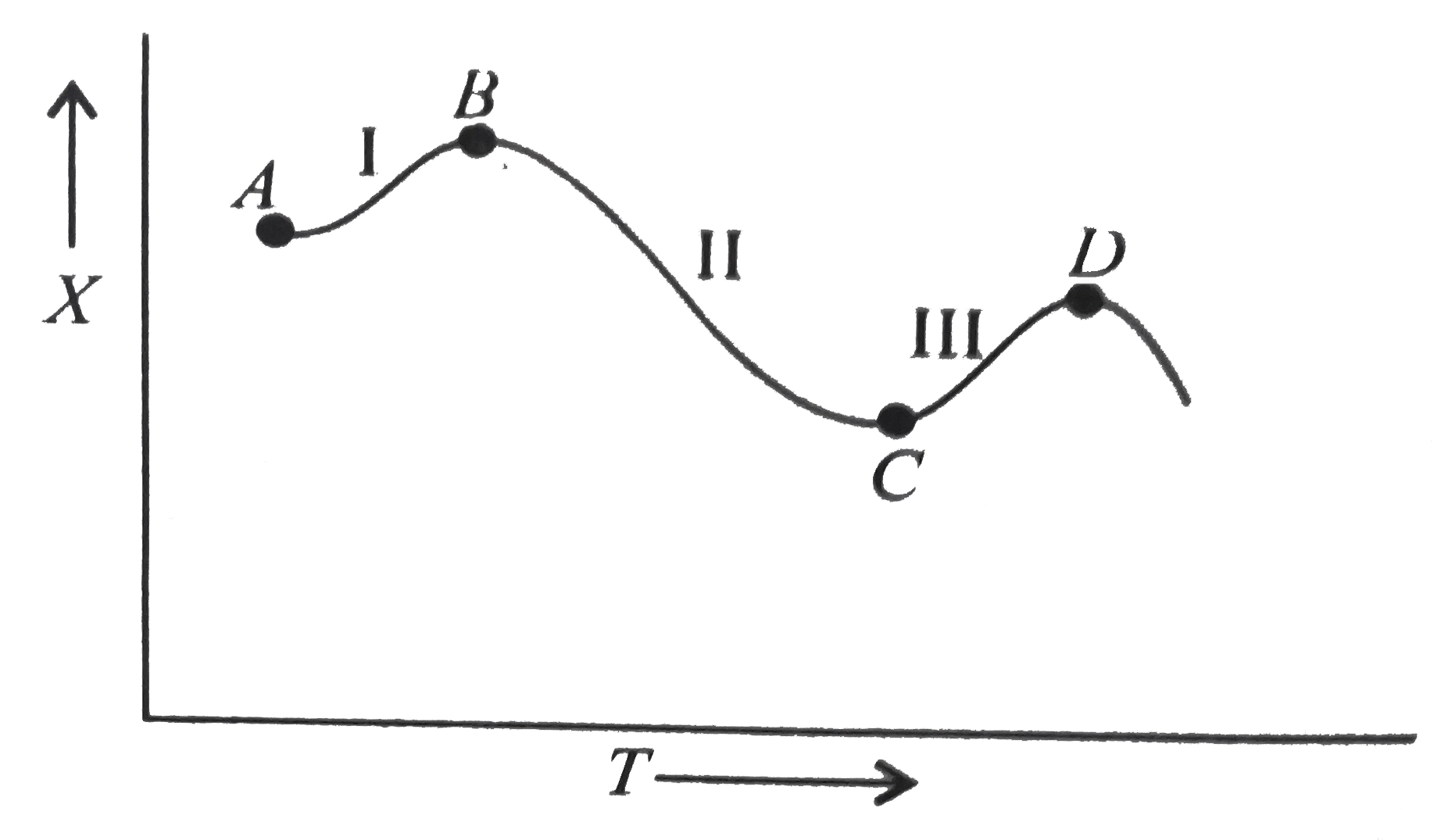For the following reaction through stages I, II and III
AI−−→BII−−→CIII−−→D
quantity of the product formed (x) varies with temperature (T) as given. Select the correct statement.

Stages I and III are endothermic but II is exothermic.
Stages I and III are exothermic but II is endothermic
Stages II and III are exothermic but I is endothermic
Stage I is exothermic but stages II and III are endothermic.
The correct Answer is:A
Stage I (A to B): The quantity of B is more than that of A. This means formation of B is favoured with increase in temperature T. Thus, stage I must be endothermic.
Stage II (B to C): The quenty of C is less than that of B. Thus, the formation of C is less favoured with an increase in temperature. Hence, stage II must be exothermic.
Stage III (C to D): Following the above statements stage III must be endothermic.
Topper's Solved these Questions
- CHEMICAL EQUILIBRIUMBOOK - CENGAGE CHEMISTRY ENGLISHCHAPTER - CHEMICAL EQUILIBRIUMEXERCISE - Concept Applicationexercise 7.1
53 Videos
- CHEMICAL EQUILIBRIUMBOOK - CENGAGE CHEMISTRY ENGLISHCHAPTER - CHEMICAL EQUILIBRIUMEXERCISE - Ex 7.2
40 Videos
- CHEMICAL BONDING AND MOLECULAR STRUCTUREBOOK - CENGAGE CHEMISTRY ENGLISHCHAPTER - CHEMICAL BONDING AND MOLECULAR STRUCTUREEXERCISE - Archives Subjective
15 Videos
- CLASSIFICATION AND NOMENCLATURE OF ORGANIC COMPOUNDSBOOK - CENGAGE CHEMISTRY ENGLISHCHAPTER - CLASSIFICATION AND NOMENCLATURE OF ORGANIC COMPOUNDSEXERCISE - Analytical and Descriptive Type
3 Videos
Similar Questions
Consider the following reaction CH3Br+Mgether−−→AHCHO−−−→BHOH−−→C. Compound C is
View SolutionIn the decay process:
A−α−−→B−β−−→C−β−−→D
View SolutionIn the following reaction sequence :
R−OHP+I2−−−→R−IAgNO2−−−→RNO2HNO2−−−→ no reaction.
The alcohol is a :
View SolutionThe end product of the reaction,
Ethyl amine HNO2−−−→(A)PCl5−−→(B)KCN−−→(C) (C) is,
View SolutionIn the sequence of the reaction
A−β−−→B−β−−→C−α−−→D, what is the relationship between D and A?
View SolutionIn the following sequence of reaction, the product C is
CH3−BrKCN−−→AH2O+−−−→BLiAlH4−−−→EtherC
View SolutionIn the following sequence of reactions,
CH3CH2CH2BrKOH(Alc)−−−−−−→ (A) HBr−−→ (B) KOH(aq)−−−−−→ (C ) The product (C) is
View SolutionIn the following reaction sequence Y is,
PhOCOCH3AlCl3−−→Δ(X)I2−−−→NaOH(Y)
View SolutionThe product D of the reaction CH3ClKCN−−→(A)H2O−−→(B)NH3−−→(C)Δ−−→(D) is
View SolutionThe compound (A) in the following reaction sequence is:
(A) PCl5−−→ (B) Alc KOH−−−−→ ( C) H2/Ni−−−→
Propane :
View Solution
